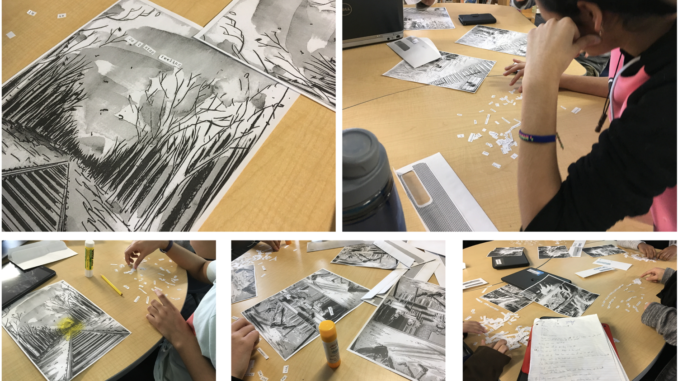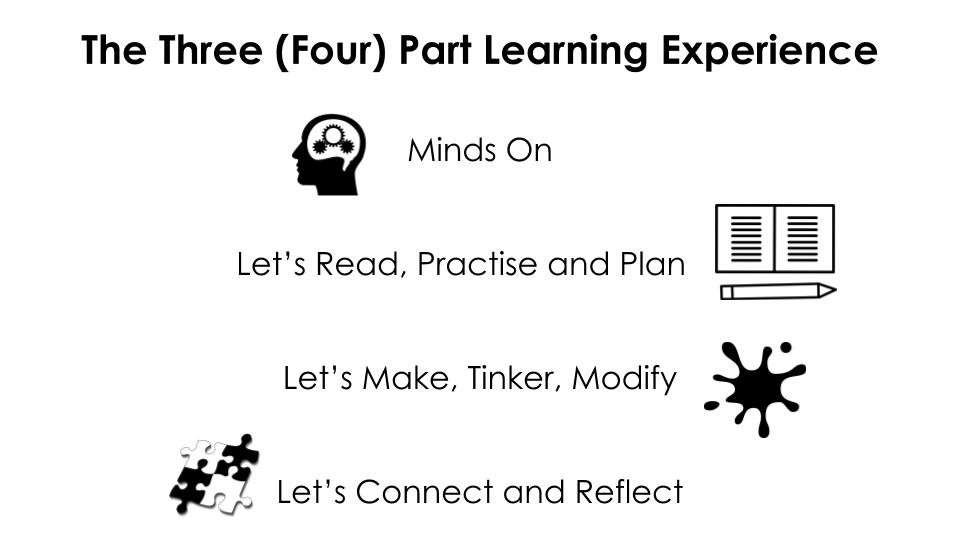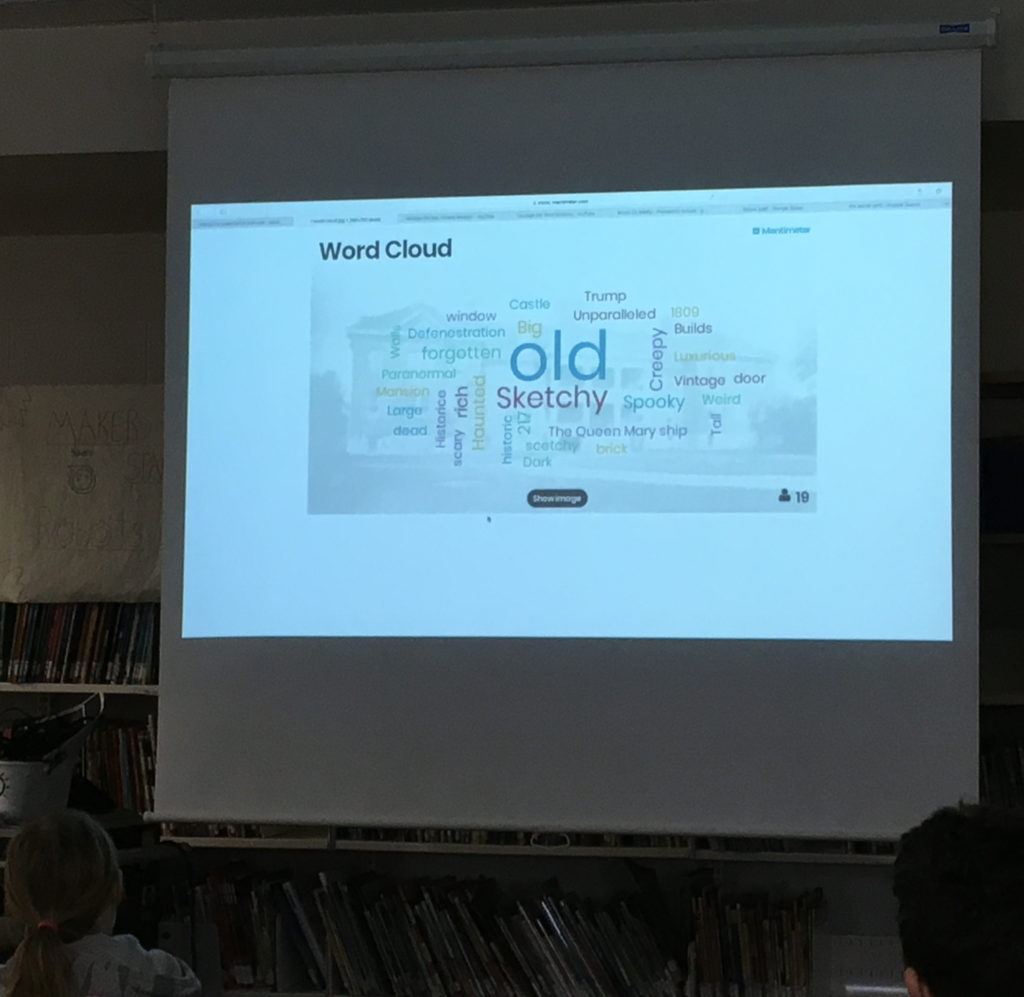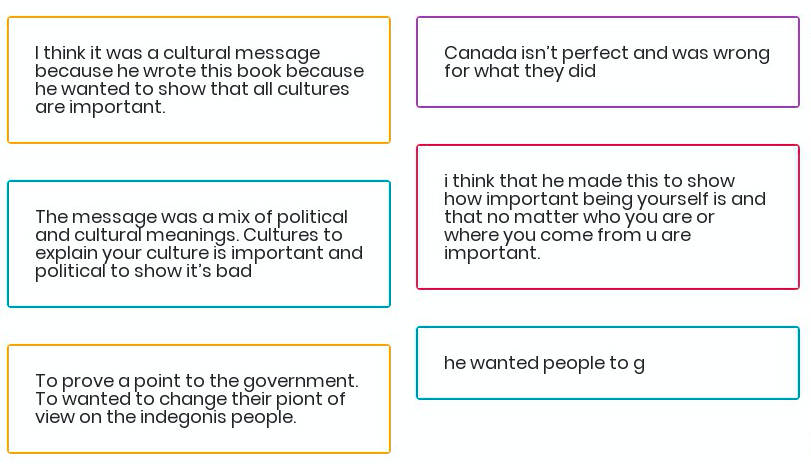
By Melanie Mulcaster
Fullan and Langworthy (2014) have long called for change in our education systems and how learning is assessed. New models of learning partnerships must be employed amongst teachers and students. Partnerships between learners must “activate, and cultivate the deep learning potential in all of us” (Fullan & Langworthy, 2014, p. ii) and allow for a focused innovation on the 6Cs: collaboration, critical thinking, communication, creativity and innovation, character education and citizenship (Fullan, 2013).
As an educator, I strive not only to meet the needs of our learners, but myself as a learner so we can all continue to grow. As teacher librarians, we develop partnerships with colleagues in order co-plan, co-teach and co-assess learning experiences that focus on the process of learning rather than the product through a variety of means. Through investigation and inquiry, my colleagues and I endeavour to document and make student thinking visible in order to engage everyone in discussion about not only about the “what” is happening our environments, but the ‘how” and “why”, to produce the inevitable next question: “where do we go next?”.
Documentation provides us with the mirror we need to reflect our practice and supports our growth as educators in many ways (Stacey, 2015). Reflection is an essential component of an educator’s practice as it is how we assess the process and the products of learning to consider how the adoption of new pedagogies might be incorporated into professional practices (Crichton & Childs, 2010; Shabazian, 2016). When shared, documentation further engages colleagues and students in purposeful dialogue and conversation about learning that helps to improve intentional practice for all stakeholders involved. Outlined below is an examination of one of our school’s documentation and reflection processes.
A Secret Path: An Assessment of a Learning Experience
A Secret Path is a text that can enable difficult conversations in the safety of our schools and classrooms. (It was also a selection in the Red Maple Forest of Reading program for last year).
The text, like many others that deal with Canada’s controversial history regarding residential schools and the treatment of our indigenous people, is one that must be broached with consideration and with respect to the readiness of our learners.
While these conversations may be difficult, it is important to note that they need to occur in our school systems. It’s how we approach the learning with respect while honouring the voices and experiences of our learners that will make the difference.
By no means, in the learning described below, do I think we are giving this topic the justice and scope it deserves. The further I delve into this text, the more questions I have and the less adequate I feel as an educator trying to bring these issues into the spotlight. However, I must take solace in the fact that this is a beginning and that we can only go forward from here.
Learning Goals (shared with students and displayed):
Media Literacy
- 1.6 we are learning to identify who produces various media texts and determine the commercial, ideological, political, cultural, and/or artistic interests or perspectives that the texts may involve (Grade 7)
- 2.2 we are learning to identify the conventions and techniques used in media forms and explain how they help convey meaning and influence or engage the audience (Grade 7)
- 3.3 we are learning how to use these conventions and techniques to in our own re-mixed media artifacts to communicate and extend a political, cultural and/or artistic message (Grade 7)
- Learning Experience: A modification of the three part lesson format
Learning Experience: A modification of the three part lesson format

Minds On:
There were and are many layers of understanding that we needed to wrap our minds around before we could dig into the text. Did students know what residential schools were? Did they understand what happened there? Did they understand the significance and the impact of these schools upon our indigenous people? Did they know the author of this text, the voice and background he brings to the story?
Layer One:

We began with an image (using images is a great minds on and is an accessible entry point for all learners) of a residential school – using the tool Mentimeter – and asked the students to input a word that the image reminded them of. Mentimeter is a great tool to quickly gauge student understanding and help facilitate next steps.
From here, we explained to students that this was a picture of a residential school. Had any of them heard the term residential school before?
Some students had, and we popcorned out what they knew, adding details where we deemed appropriate.
Layer Two:
We explained to students that our text further explored residential schools and the treatment of our indigenous people therein. More specifically, it focused on the story of Chanie Wenjack, a boy who ran away from one such school in 1966. We watched Chanie’s Heritage Minute story.
Layer Three:
We then delved into the significance of the author. Who wrote this text? Did students know the name Gord Downie? Who was he? What did he represent? Why is his contribution to this topic significant and what did he contribute to Canadian culture in general?
It wasn’t until the next time I saw the students I realized I should have asked whether or not they thought Gord’s voice was the best voice for this story? (I did in fact pose this question the next class drawing parallels to The Hate U Give, a book another student was reading. Why is an author’s voice and background relevant to telling an authentic story?)
Let’s Read
We decided to explore the text via the official video. Using a text that incorporated visuals and a voice recording also made the story accessible for all learners.
As we viewed the text, we stopped at various points and formed breakout groups to discuss some conventions and techniques. What methods or techniques are setting the tone for this video? What jumps out at you? Was the font chosen important? How was the use of colour significant to the message being sent?
Before moving on to the making component of the learning, we asked the students:
What is the purpose of this text (cultural, political or artistic)?
What point was the author trying to make?
Once more, we used the Mentimeter tool to gather and share the responses. Mentimeter is a great tool for assessment for learning, while also providing a safety need for students to voice their thinking. From this experience, we were able to see where our students understandings lay to best determine our next steps to support and scaffold the learning.

Let’s Make:
We chose five visual images from the text and shared them with the students through a gallery walk asking:
What image from the text speaks to you on a personal level?
We asked students to consider this question and choose the image that resonated with them the most.
Once students chose an image, we gave them an envelope that contained the corresponding lyrics – the catch being the lyrics were all cut up into singular words.

How might you think critically, and re-mix the image to further enhance a political, cultural or artistic perspective?
How might you use one colour to add meaning to the text?
How might you remix and physically rearrange the lyrics on the page for effect?
Together, we co-constructed success criteria for our learning artifacts.
This experience was open ended for interpretation and had accessible entry points for all. Learners could extend their writing in many different ways, mixing and remixing combinations of words. The new text created could be simple or complex – there were many ways in which to communicate meaning.
Connect and Reflect
Once students were done connecting their artifacts, they were asked to reflect and think critically on their learning of the three learning goals.
Each student was given three cue cards – each one being a different colour.

On each cue card they explained their evidence of learning for each of the learning goals. For some students, these responses were scribed, or students used voice to text technology to print their responses out.
Once this was finished, students stapled these cue cards on the bottom of their work.
Students were then invited to give each peer feedback on learning artifacts through Google Forms. Modifications for our students with special needs were also applied.
Once peer feedback was collected, students were encouraged to revise their work based on suggestions given.

The use of Google Forms was particularly important because it was non-threatening method of collecting feedback and most students felt more comfortable giving feedback in this manner. The prompting sentences really helped focus and guide the thinking.
A final self-reflection of learning through Google Forms for each student was administered.
During a culminating student led conference, a final assessment of learning was determined. Questions that still remained were identified for future inquiry.
What we noticed:
We noticed that most of our students were engaged in the learning and took it seriously. We have used Mentimeter as a learning tool in the past – with varying success that has required several teachable moments. We did not have this problem today. What does this say about the content we used and our students’ engagement?
We noticed a visible reaction to the text – students were surprised at the ending with Chanie’s death. What?!?! He dies? How will this impact our text choices in the future? What resonates with our students? What is important to them?
We noticed that some students took the time and effort to look up the meaning behind different colours before choosing and adding pigmentation to their text. How might we build upon this inquiry?
We noticed students, for the most part, took time and carefully thought about the words they used in their artifact and their placement on the text. They really enjoyed the hands on tinkering and the physical manipulation of the text. I had originally thought we would do this digitally, but am very glad we did not as I don’t think it would have had the same impact on learning. What future learning opportunities might we develop as a result?
We noticed that when probing deeper, most of our understandings are surface level. I wonder how we can build upon this learning.
We noticed that students did a far better job at providing feedback than I expected. However, more work needs to be done to scaffold peer effective feedback in order to improve work.
What we wonder:
We wonder about re-visiting the importance of voice in a text. Whose voice is telling the story? How do an author’s life experiences impact the validity of the story they are telling? Was Gord Downie the right voice for this text?
We tried briefly exploring this issue when I saw that one of our students was reading The Hate U Give. We took a moment to do some research on the author. How might her life experiences impact the authenticity and validity of the story? How might the perspective change if another voice told this story?
How does voice impact our historical documents?
…we noticed that some students did not quite grasp this concept. Food for thought.
We wonder if students really understand the impact the residential school system has had on survivors and continues to have in the resulting generations. I wonder how we can continue to build on our understanding for a better Canada.
I wonder if sometimes I’m too critical and direct learning too much. Some of our students had only created one sentence to extend the perspective of their piece. I asked for more. However, in reflection – shouldn’t one sentence be enough if students can explain their thinking? Or is it knowing your learner and their capabilities? Is it wrong to see where the learning could extend? I wonder if I could have approached feedback in this manner instead. “I like where you are going with this statement. Can you explain it to me? How might you extend this idea?”
I wonder how I can continue to support and scaffold the feedback process.
Where do we go next?
Our next step in learning: how to amplify our learning and share with authentic audiences in order to help drive change. How do we keep driving the inquiry forward?
It is our hope that we can create a gallery of our work. It would be great if we could record our students reading their work and link it underneath with a QR code.
How might we share this beyond the classroom? Could we have an open house for parents? A virtual gallery?
I also think we need to delve deeper into texts in regards to voice. Whose voice is present? Whose is missing? How does this impact the validity of what’s being communicated? In this age of “fake news” this is an invaluable life skill for our students to develop.
References
Crichton, S., & Childs, E. (2016). Taking making into schools through immersive professional learning. Proceedings of the European Conference on E-Learning, 144-150.
Fullan, M. (2013). The new pedagogy: Students as teachers as learning partners. Learning landscapes teaching and learning in the digital world: Possibilities and challenges. (Volume 6, No. 2). Retrieved from http://www.learninglandscapes.ca/images/documents/ll-no12-vfinal-lr-links.pdf.
Fullan, M., & Langworthy, L. (2014). A rich seam: How new pedagogies find deep learning. Pearson Education. Retrieved from http://michaelfullan.ca/wp-content/uploads/2014/01/3897.Rich_Seam_web.pdf.
Shabazian, A. N. (2016). The role of documentation in fostering learning. YC: Young Children, 71(3), 73-79.
Stacey, S. (2015) Pedagogical documentation in early childhood. St. Paul, MN: Redleaf Press.

Melanie Mulcaster is an elementary teacher-librarian in the Peel District School Board. A life long learner and maker, she is passionate about inspiring and empowering modern learners to discover, connect, innovate and explore. @the_mulc